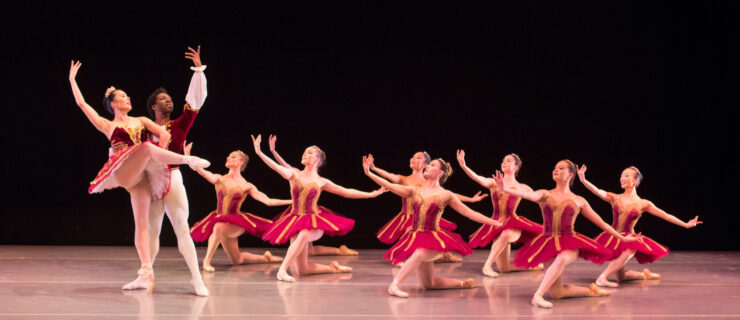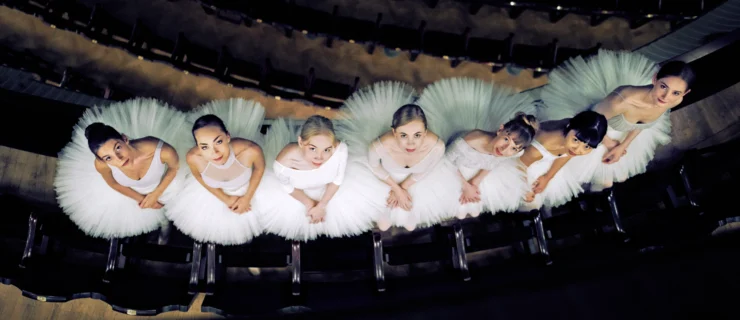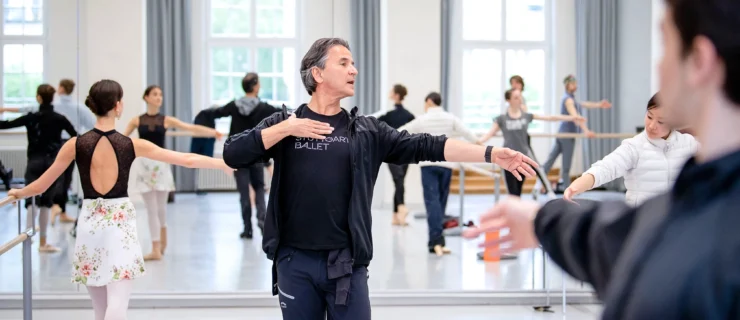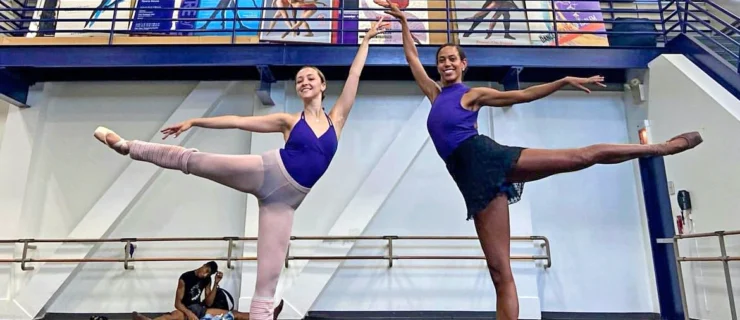Your Best Body
Drink Up
As a dancer, you know you should drink plenty of water, but do you know why? It keeps nearly all of the body’s major systems in working order. And if they’re not functioning properly, your dancing could suffer.
- The body uses water to help you regulate your core temperature via perspiration. When you’re running back-to-back variations in rehearsal, water keeps you from getting overheated. Sweat is a good thing.
- Want a better battement? All of your joints, including the hips, knees and ankles, need water to stay lubricated. Drink up to use your full range of motion.
- Out of breath? Blood—which is about 80 percent water—carries oxygen and vital nutrients through the circulatory system to your cells. Plus, water moistens the air you breathe.
- If you’re dehydrated, your balance is likely to suffer. That’s because the inner ear needs to maintain a fluid balance to function properly.
- Feeling sore? Dehydration could be a culprit. Getting enough water can reduce muscle soreness and hasten recovery time.
- Without enough water, a dancer’s healthy diet would be for naught. H2O helps dissolve minerals from food so the body can use them.
Beat the Heat
If you’re dancing in high temperatures, like at an outdoor summer festival, a studio without air conditioning or under searing stage lights, it’s even more important to get enough water, since your risk of dehydration and heat illness increases. Don’t wait until you’re feeling thirsty to drink liquids—that’s a sign you may already be dehydrated. Muscle cramping, dizziness, elevated body temperature, nausea, clammy skin and extreme thirst are all symptoms of heat illness—a host of conditions ranging from heat rash, caused by excessive sweating, to life-threatening heat strokes. If you’re experiencing these symptoms, Dance/USA’s Task Force on Dancer Health recommends applying an ice pack to your armpit and groin to cool your body’s core temperature.
By the Ounce
How much water should you drink on a performance day?
2–3 hours before: 7.5–10 ounces of cool liquids
10–20 minutes before: 6–7 ounces
While you’re dancing: 6–8 ounces for every 30 minutes of activity
Within 2 hours after the show: 23 ounces for each pound of body weight lost from sweating during dancing
Your Seasonal Menu
Tired of having the same bland meals for breakfast, lunch and dinner? Spice up your routine by adding the rich flavors of these fruits, veggies and herbs that are in season in August.
Breakfast:
Boost your basic yogurt by topping it with homemade fruit salad. Try a mix of cantaloupe, blackberries and raspberries. Cantaloupe is full of vitamin A, which helps the body build and maintain healthy skin and tissues. It also promotes vision in low light—great for finding your place before the curtain goes up. Blackberries and raspberries are high in fiber, meaning you’ll sail through your morning class feeling satiated.
Lunch :
Instead of grabbing a chicken salad sandwich, make your own and sub in mashed avocado instead of mayonnaise. Avocados are an all-around vitamin and mineral superstar. Plus, they’re packed with omega-6 fatty acids, heart-healthy fats that fight inflammation.
Snacks:
If you’re bored with carrots, nosh on green bell pepper strips dipped in hummus. One cup has as much vitamin C as an orange with peel—200 percent of your daily value.
Dinner:
Ditch basic pasta for sautéed ribbons of summer squash. Toss with extra-virgin olive oil and diced tomatoes and sprinkle with fresh basil, garlic and rosemary. Squash is extremely low in fat and has far fewer carbs than spaghetti. Basil is high in vitamin K, which helps blood clot. Aside from being good for your heart, garlic is said to help fight stress and fatigue. Rosemary is an aromatic herb that aids in digestion.
Power Up
If you’re heading into an audition and feeling nervous, try striking this power pose: Take a wide stance with your head held high and your arms energized and extended to form the letter T with palms facing down. Research shows that holding a high-power pose for two minutes can make you feel more confident, and it lowers your cortisol levels, meaning you’ll feel less stressed. Plus, this “fake it till you make it” strategy is a quick and easy way to strengthen your lats, deltoids and triceps, giving you more defined port de bras.
Danger Zone
Transitioning any ballet from the studio to the stage can be a tricky process and can put you at risk of injury. What are the biggest dancer dangers onstage? The German Social Accident Insurance Institution evaluated the injury reports of 790 professional dancers and found these trends.
- When are you most likely to get injured? During performance. 79.4 percent of accidents happened during shows. 19.7 percent occurred during onstage rehearsals.
- Where are you most likely to get injured? 63.6 percent of injuries occurred in dancers’ legs.
- What are the most common causes of injury onstage? 21.7 percent of stage incidents are caused by the dancer’s partner, so be sure to run through any partnering full out during dress rehearsals. And watch out for slick or sticky floors, which accounted for 21 percent of injuries.
Unfortunately, even the most well rehearsed dancers run into problems. The study found that 59.3 percent of injuries arose from factors outside of a dancer’s own control.
Feeling Less Than Inspired?
Daily class is part of every professional ballet dancer’?s routine. But after so many pliés and tendus, you may glaze over at the thought of doing another barre. If you need some inspiration for your next class, try going for a short stroll beforehand. Researchers at Stanford University found that participants were able to come up with more creative ideas after they’d taken a walk. You may see barre work in a whole new light, enabling you to really dance it instead of just sinking into an old routine.





